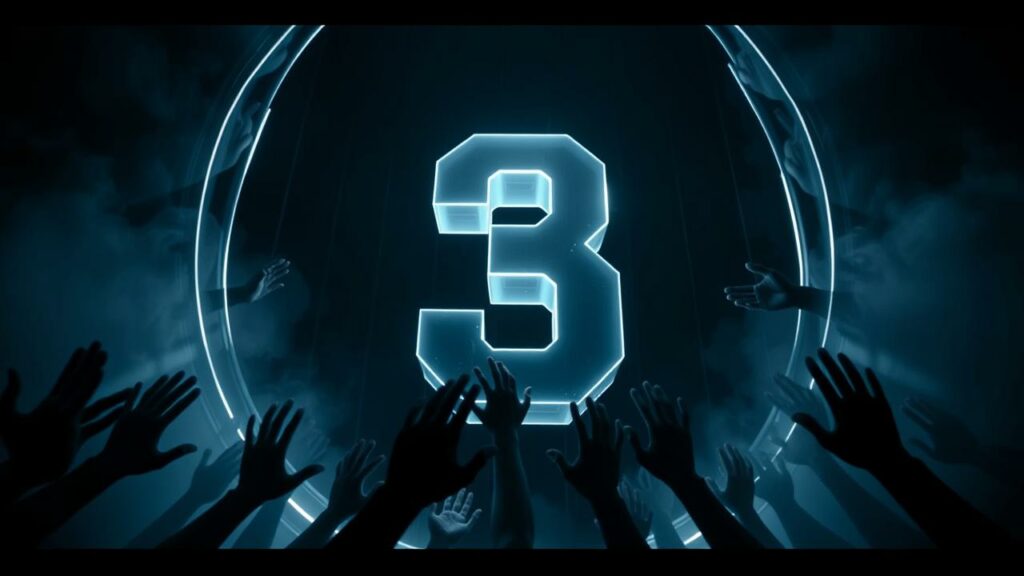That Number Doesn’t Own You
The screen glows with a three-digit number that feels like a judgment. 580. 620. Maybe lower. A cold knot tightens in your gut. It’s not just a number; it’s a gatekeeper, a silent bouncer at the club of adult life, shaking its head no. No to the decent car loan. No to the apartment in the good neighborhood. No to the peace of mind that comes with knowing you have options.
You’ve felt that door slam shut. The polite rejection email. The higher interest rate that feels like a penalty for just trying to get by. It’s a weight, a shadow that follows you, whispering that you’re not good enough, not responsible enough. That number becomes a brand on your identity.
But that is a colossal lie. That number isn’t a measure of your worth, your heart, or your potential. It is nothing more than a data point, a reflection of past battles, some lost, some fought to a bitter draw. And like any data point, it can be changed. This isn’t about wishing or hoping; it’s about executing a plan. True, lasting credit score improvement is a war fought on multiple fronts, but it’s a war you can win. This is where you take back the power.
The Unbreakable Code to Your Comeback
Your fight begins with a clear strategy. Forget the noise and the so-called “gurus.” The path forward is forged from these core principles:
- Master the Calendar: Pay every single bill on time. No exceptions. This is the bedrock of your resurrection.
- Starve Your Balances: Annihilate your revolving debt. The lower your credit card balances, the faster your score climbs.
- Become a Digital Detective: Scour your credit reports for errors. You are your own best advocate, and inaccuracies are your first targets.
- Negotiate with Ghosts: Address old wounds—collections and charge-offs—with tactical precision.
- Build from the Ground Up: If your credit file is thin or non-existent, you will forge new, positive history with the right tools.
The Three-Digit Cage and How to Pick the Lock
Before you can dismantle the cage, you must understand its architecture. Most lenders use the FICO score, an algorithm that digests your financial life and spits out that infamous number. It’s not magic; it’s math. And you can make the math work for you.
Think of it as a set of weighted levers. A few of them carry immense power, while others are less critical. To get the machine to move in your favor, you must apply force where it matters most.
The Core Components
- Payment History (35%): This is the titan. The absolute heavyweight. A single late payment can crater your score and linger like a ghost for seven years. Punctuality isn’t just a virtue here; it’s a weapon.
- Amounts Owed (30%): Right behind payment history is this crucial factor, often expressed as your credit utilization ratio. It’s the measure of how much you owe on revolving accounts (like credit cards) compared to your total available credit. High balances signal risk to lenders, screaming that you’re stretched thin.
- Length of Credit History (15%): A longer history of responsible credit use is better. This is why closing old accounts, even unused ones, can be a self-inflicted wound.
- Credit Mix (10%): Lenders like to see that you can responsibly manage different types of credit, like installment loans (auto, mortgage) and revolving credit (cards).
- New Credit (10%): Opening several new accounts in a short period can be a red flag. It looks like desperation. Tread carefully.
Look at those numbers again. Payment history and amounts owed make up 65% of your score. Sixty-five percent. This is where you focus your fire. Everything else is secondary.
A Masterclass in Rapid Score Boosting
Sometimes you need to cut through the theory and see the strategy in action. This isn’t about abstract concepts; it’s about the raw mechanics of making that number jump. The video below breaks down one of the most powerful levers you can pull, providing a clear visual for a tactic that delivers immediate results.
Source: Kimberly Mitchell via YouTube
The Relentless Rhythm of On-Time Payments
The cab of his eighteen-wheeler was a universe of crumpled receipts and the faint smell of diesel and stale coffee. For Mark, a long-haul trucker, life was a blur of highway hypnosis and truck-stop diners. Bills were things he dealt with in brief, exhausted moments between runs. He thought he’d caught them all this month, but one small credit card bill, mailed to his home a thousand miles away, was forgotten. He didn’t realize it until the alert popped up on his phone: “Your credit score has changed.” It had dropped 47 points. Forty-seven points for a forgotten $40 minimum payment. The dread was instant and heavy, a physical weight in his chest. That one slip would now haunt his credit report for seven years, a constant reminder of a single moment of chaos.
Mark’s story is a brutal lesson in the unforgiving nature of payment history. It is the single most important factor in your credit score. One 30-day late payment can be more damaging than carrying a high balance for a year. The system is binary: you are either on time, or you are not. There is no in-between.
This is non-negotiable. Set up automatic payments for at least the minimum on every single account. Every loan, every credit card. Do it now. You can always pay more manually before the due date, but this ensures the automated minimum payment acts as a safety net, protecting you from the chaos of life and the catastrophic impact of a single missed payment.
Starving the Beast: The Art of Low Utilization
Imagine your available credit is a large, empty room. Your credit card balance is a beast that lives in that room. When the beast is small—say, occupying less than 10% of the space—it’s manageable, almost invisible. But as it grows, as your balance climbs to 50%, 70%, 90% of your credit limit, the beast fills the room. It looks menacing, dangerous, and out of control. This is what a high credit utilization ratio looks like to a lender.
This ratio is calculated by dividing your total revolving credit balances by your total revolving credit limits. While the common advice is to keep it below 30%, the real power lies in going further. Those with the highest scores often keep their utilization below 10%. As one Reddit user bluntly put it, the fastest way to see a jump is to “pay credit cards down to 0%.”
This is the area where you can see the quickest results. Unlike a late payment, which stains your report for years, your utilization is reported fresh every month. Pay down a maxed-out card today, and your score could leap upwards as soon as the lender reports the new, lower balance. This is your primary offensive weapon in the battle for a better score.
Hunting for Ghosts in the Machine: Your Forensic Report Audit
In a small, cluttered studio apartment smelling of turpentine and linseed oil, Eloise stared at the loan denial on her laptop. She was an oil painter, and the modest loan was for a booth at a major art fair—a chance to finally break out of the gig-to-gig cycle. The reason cited: “insufficient credit history and low score.” It felt like a verdict on her life, not just her finances. A surge of defiant anger replaced the familiar sting of rejection. She wasn’t going to accept it. That night, she pulled her credit reports from all three bureaus, a task she’d avoided for years out of sheer dread.
As she scrolled through the digital files, a jumble of old addresses and closed accounts, she found it. A medical bill for $800, listed as a collection account. She remembered that ER visit two years ago, and she remembered her insurance paying it. The collection agency was a ghost, a phantom debt haunting her record. For the first time in a long time, she felt a flicker of hope. This wasn’t her failure. This was an error.
Your credit report is not a sacred, infallible document. It is a file compiled by humans and algorithms, and it is frequently wrong. The law gives you the absolute right to a free report from each of the three major bureaus—Equifax, Experian, and TransUnion—every year through AnnualCreditReport.com. Get them. Print them out. Go over them line by line with a red pen like an obsessive detective. Look for accounts that aren’t yours, incorrect balances, and payments marked late when you know you paid on time. Every error is an opportunity. The Fair Credit Reporting Act (FCRA) is your legal shield and sword, giving you the power to dispute credit report inaccuracies. Effective credit report errors correction begins with this meticulous, personal audit.
Negotiating with Ghosts: Erasing the Marks of the Past
Once you’ve identified a negative item, whether it’s a legitimate old debt or an error like Eloise’s, the mission becomes simple: get it removed. For inaccuracies, you file a formal dispute with the credit bureau. They are legally obligated to investigate your claim, typically within 30 days. If the creditor who placed the item on your report cannot verify the debt’s accuracy, the bureau must delete it.
For legitimate old debts that have gone to collections, the path is murkier. You may be tempted to simply pay it off, but that often doesn’t help. A paid collection is still a collection on your report. The goal is complete removal. This is where a strategy known as “Pay for Deletion” comes in. It’s a negotiation. You offer to pay the debt (often a reduced amount) in exchange for the collection agency’s written promise to remove negative items from credit report entirely. Get this agreement in writing before you send a single penny. It’s not guaranteed, and some collectors won’t play ball, but it’s a powerful tool to erase the past.
Never let anyone tell you these marks are permanent scars. With the right strategy, you can actively work to remove negative items from credit and clean your file, taking back control piece by piece.
Building from Ashes: Forging New Lines of Credit
Jax navigated the city’s late-night streets on his e-bike, a thermal bag strapped to his back, delivering pad thai and pizza to people in warm, bright apartments he could never afford. At 22, he existed entirely in the cash and app economy. He had no debt, but he also had no credit. He was a ghost. When he tried to finance a used car to expand his delivery range, he was met with a blank stare. “There’s nothing here,” the finance manager said, sliding his application back across the desk. It was a unique kind of powerlessness—being told you’re too invisible to participate.
For those with a “thin file” like Jax, or for those recovering from bankruptcy, the objective is to create positive history. A secured credit card is the primary tool for this mission. You provide a small security deposit (e.g., $200), and that becomes your credit limit. To the credit bureaus, it looks and reports just like a regular unsecured card. Jax got one, used it only for his monthly phone bill, and set up auto-pay to pay the full balance every cycle. Six months later, a number appeared where there was once only a void: 680. It wasn’t perfect, but it was his. He had built it.
Another powerful strategy is to be added as an authorized user credit card to a trusted family member’s or partner’s well-managed account—one with a long history and low utilization. Their positive history is essentially “cloned” onto your report, often providing a significant and rapid boost. Just ensure the primary user is financially disciplined; their mistakes will become your mistakes. This can be one of the simplest methods when looking for credit building strategies. For some, being added as an authorized user credit card is the first step out of credit invisibility.
The Sirens’ Song: Resisting Common Credit Traps
As your score begins to climb, a strange thing happens. The world opens up. Suddenly, your mailbox is full of pre-approved credit card offers, each promising dazzling rewards and introductory rates. It’s tempting to grab them, to feel the validation of being wanted. This is a siren’s song that can lead you right back onto the rocks.
Applying for new credit triggers a “hard inquiry” on your report, which can cause a small, temporary dip in your score. A single inquiry is no big deal, but a flurry of them in a short time signals desperation to lenders. Apply for new credit surgically, only when necessary and when your chances of approval are high.
An even more insidious trap is the urge to “clean up” by closing old credit card accounts you no longer use. This feels like a smart move, but it’s often a disaster. Closing an old account does two damaging things: it shortens your average age of credit history and, more importantly, it vaporizes your available credit, which can cause your credit utilization ratio to spike dramatically. That old, zero-balance card from college isn’t clutter; it’s a silent, vital pillar supporting your entire credit profile. Leave it open.
Your Digital Arsenal
You are not fighting this battle with sticks and stones. A host of digital tools can serve as your reconnaissance and support.
- Score Simulators: Services like Credit Karma’s simulator can be surprisingly useful. They allow you to game out scenarios—”What happens if I pay off $2,000 in card debt?” or “How will a new car loan affect my score?”—giving you a projection of the impact before you act. Treat them as educational tools, not infallible prophecies.
- Data Augmentation: Tools like Experian Boost offer to connect to your bank account and give you credit for paying utility and cell phone bills on time. If you have a thin file, this can be a legitimate way to add positive payment history to your report. It’s not a silver bullet, but it can be a helpful boost.
- Dispute Letter Templates: When you’re ready to go on the offensive against inaccuracies, you don’t have to start from scratch. A quick search for “FCRA dispute letter templates” or “Section 609 letter templates” will yield a wealth of resources. These provide the legal framework to make your dispute official and impossible for the bureaus to ignore.
Codex of the Credit Masters
For those who wish to go deeper, these texts serve as field manuals for the journey.
Credit Repair Secrets Unlocked by Marcus D. Holloway: A guide framed as revealing what the credit game insiders don’t want you to know, focusing on raising your score and erasing bad debt.
Improve and Increase Your Credit Score by Jason R. Rich: This book dives into specific management strategies with a focus on how better credit saves you thousands in the long run.
The Credit Compass by S Williams: Focuses on the core tips for improving your score but also on the deeper concept of building financial trust with lenders and yourself.
Interrogations from the Front Lines
How can I increase my credit score by 100 points in 30 days?
This is the holy grail everyone searches for, and the answer is a firm “it depends.” If your score is low due to maxed-out credit cards, paying them down below 10% utilization can absolutely produce a massive point increase in a month. Likewise, if you successfully get a significant error (like an incorrect collection or late payment) removed, the jump can be dramatic and swift. However, if your report is damaged by multiple late payments or defaults, there is no magic wand. It’s about starting the good habits—on-time payments and debt reduction—and understanding that recovery is a process, not an overnight event. The desire to improve credit score fast is understandable, but sustainable change takes time.
What is the 2 2 2 credit rule?
You might see the “2/2/2 rule” floating around online, suggesting you should have two revolving accounts, two installment loans, and review your credit every two months. Frankly, it’s more of an internet-born guideline than a hard-and-fast rule from FICO or the bureaus. While having a healthy mix of credit is a real scoring factor, don’t get hung up on rigid, folksy rules. Focus on the big two: pay all your bills on time and keep your credit card balances exceptionally low. Master those, and the mix will take care of itself over time.
How do I get a 700 credit score in 6 months?
A 700 score is a powerful milestone, and for many people, reaching it in six months is an entirely achievable mission. The battle plan is exactly what’s outlined here. Step 1: Get a secured credit card if you have no open cards. Step 2: Use it for a small, recurring purchase (like a streaming service) and pay the entire balance off every month without fail. Step 3: At the same time, audit all three of your credit reports for errors and dispute every single one. Step 4: If you have old collections, begin the pay-for-deletion negotiation process. This consistent, multi-front attack on the core pillars of credit score improvement is the most reliable path to 700 and beyond.
The Armory & The Archives
Continue your education and arm yourself with information from these primary sources and communities.
- AnnualCreditReport.com: The official, legally mandated source for your free annual credit reports from all three bureaus.
- Consumer Financial Protection Bureau (CFPB): Government-level information on credit scoring and your rights.
- Experian: One of the three main credit bureaus, offering its own educational resources.
- Charles Schwab: Financial institution perspective on improving credit.
- r/CRedit: A community forum for discussing all things credit, from repair to building.
- r/personalfinance: A broader community for budgeting, debt, and financial planning where credit is a frequent topic.
Your First Step Toward Freedom
The journey of a thousand miles begins with a single step. For you, right now, that step is not to conquer the world. It’s to face the data. Go to the official site. Pull one of your credit reports. Don’t judge it, don’t fear it. Just look at it. This is your map. It shows you where the dragons are, where the paths are blocked, and where the treasure is buried. Every action you take from this moment forward is a step toward a different future.
This is more than just credit score improvement; it is the deliberate pursuit of credit optimization for financial freedom. It’s the foundation of a real financial independence roadmap. The power was never in the number on the screen. The power has been inside you all along. Now, it’s time to unleash it.







